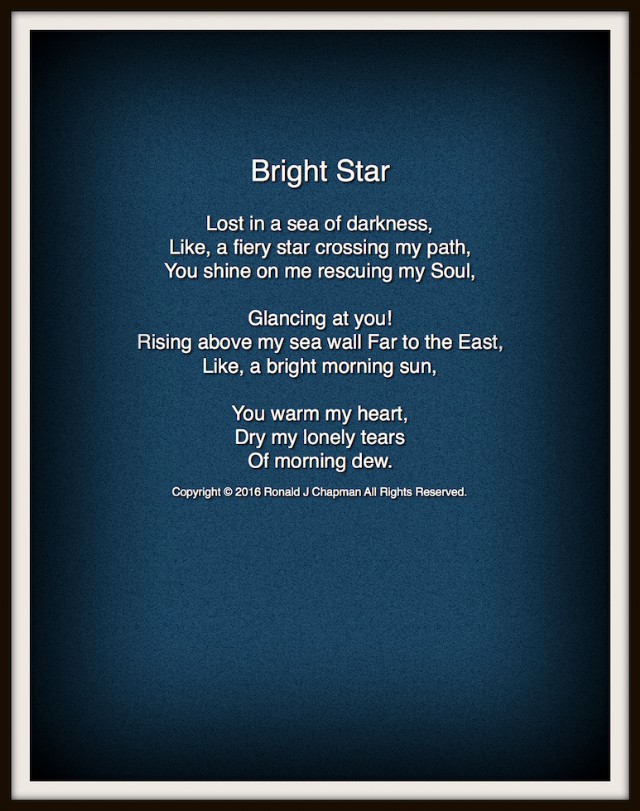
Bright Star by Ronald Chapman Bright Star Poem
John Keats Bright star, would I were stedfast as thou art— Not in lone splendour hung aloft the night And watching, with eternal lids apart, Like nature's patient, sleepless Eremite, The moving waters at their priestlike task Of pure ablution round earth's human shores, Or gazing on the new soft-fallen mask Of snow upon the mountains and the moors—

Star Light Star Bright Poem Printable Printable Word Searches
"Bright Star" is a love sonnet written by John Keats. The exact date of composition is uncertain as it was published after his death in 1838. It expresses mingled religious and romantic longing.

Bright Star by John Keats Poem Print Poetry Print Gift Etsy
In the case of "Bright Star!" this stance is made explicit in the opening line: "Bright Star! Would I were steadfast as thou art.". Stability, Stillness, and Steadfastness: The central theme of "Bright Star!" is the speaker's desire to live up to the ideal of the North Star. The quality the speaker most admires in the star is.
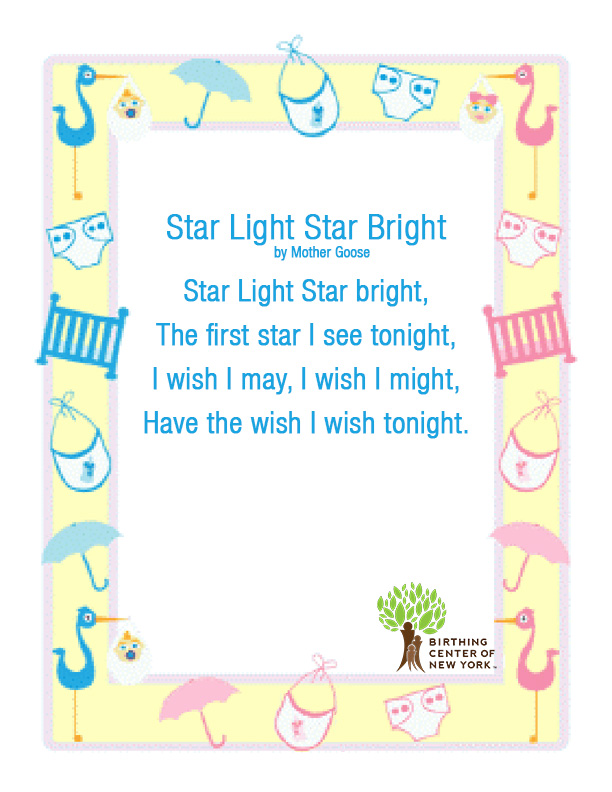
Pocket Chart Poem Star Light Star Bright Nursery Rhyme thementor.me
"Bright Star" is one of romantic poet John Keats' most popular sonnets. It is written in the form of a typical Shakespearean sonnet, with 14 lines made up of an octet and a sestet with the volta, or turn, occurring at line 9 and ending with a rhyming couplet. The rhyme scheme is Shakespearean: ababcdcdefefgg
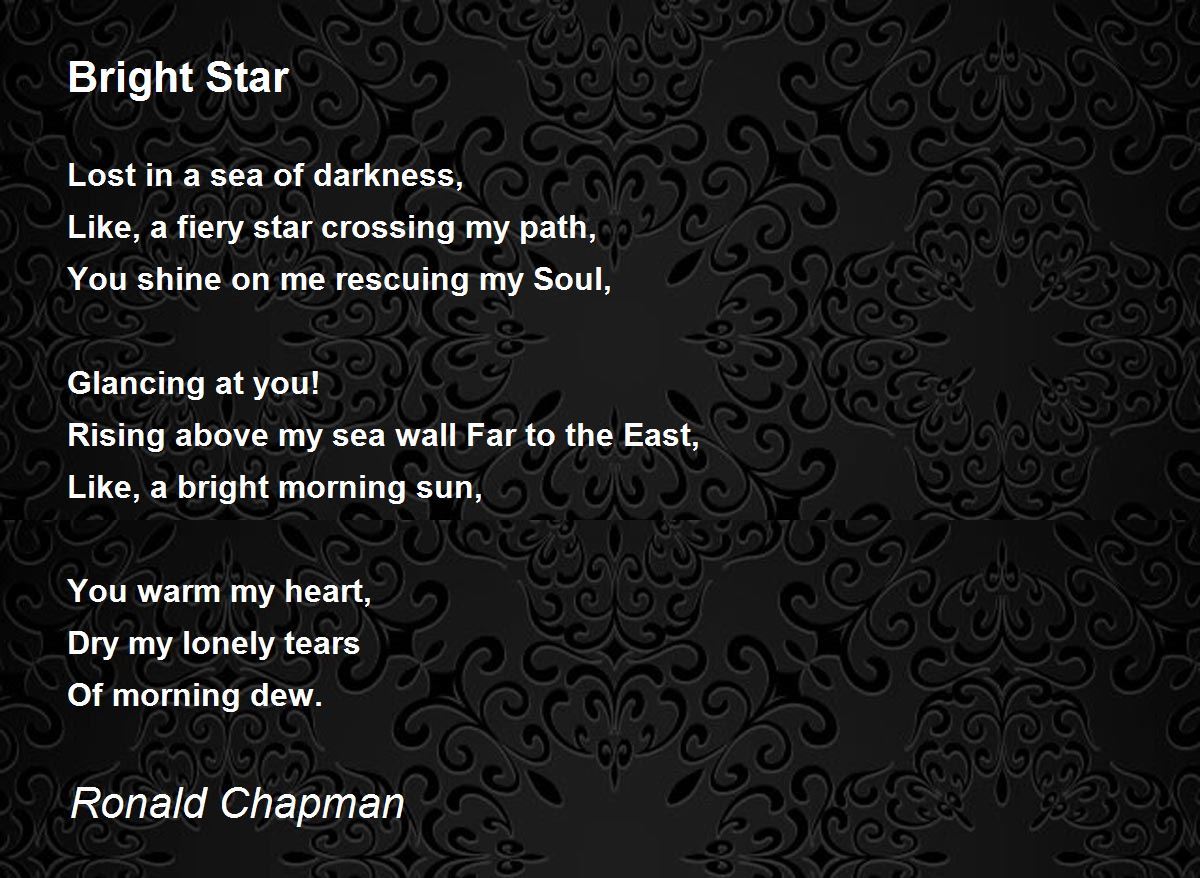
Bright Star by Ronald Chapman Bright Star Poem
Bright Star Bright star, would I were stedfast as thou art ? Not in lone splendour hung aloft the night And watching, with eternal lids apart, Like nature's patient, sleepless Eremite, The moving waters at their priestlike task Of pure ablution round earth's human shores, Or gazing on the new soft-fallen mask

One of my favourite poems of all time. Bright Star by John Keats Poems about stars, John keats
Bright star, would I were stedfast as thou art— Not in lone splendour hung aloft the night And watching, with eternal lids apart, Like nature's patient, sleepless Eremite, The moving waters at their priestlike task Of pure ablution round earth's human shores, Or gazing on the new soft-fallen mask Of snow upon the mountains and the moors—

oh, Bright Star. John Keats, poetic genius. Poems about stars, Classic quotes, John keats poems
Bright Star John Keats 1795 - 1821 Bright star! would I were steadfast as thou art— Not in lone splendour hung aloft the night, And watching, with eternal lids apart, Like Nature's patient sleepless Eremite, The moving waters at their priestlike task Of pure ablution round earth's human shores, Or gazing on the new soft fallen mask

Bright Star by John Keats English Poem YouTube
'BRIGHT STAR' BY JOHN KEATS BY NICHOLAS Keats and 'Bright Star' The great English Romantic poet John Keats created some of the best-loved poems in the tradition - 'Ode to a Nightingale', 'The Eve of St. Agnes', and the sonnet 'Bright Star'.

😀 Bright star poem analysis. The Analysis of Bright Star by John Keats — 20190301
Both of these qualities can be seen in "Bright Star, would I were stedfast as thou art." For many years, it was believed that this was the last poem Keats ever wrote before his death in 1821, and that the woman it describes is his fiancée, Fanny Brawne. Now, scholars know that the poem was written earlier, probably around 1819.

Bright Star, by John Keats Keats Quotes, John Keats Poems, Poem Quotes, Author Quotes, Beautiful
John Keats, ' Bright Star '. Bright star, would I were stedfast as thou art— Not in lone splendour hung aloft the night And watching, with eternal lids apart, Like nature's patient, sleepless Eremite, The moving waters at their priestlike task Of pure ablution round earth's human shores,
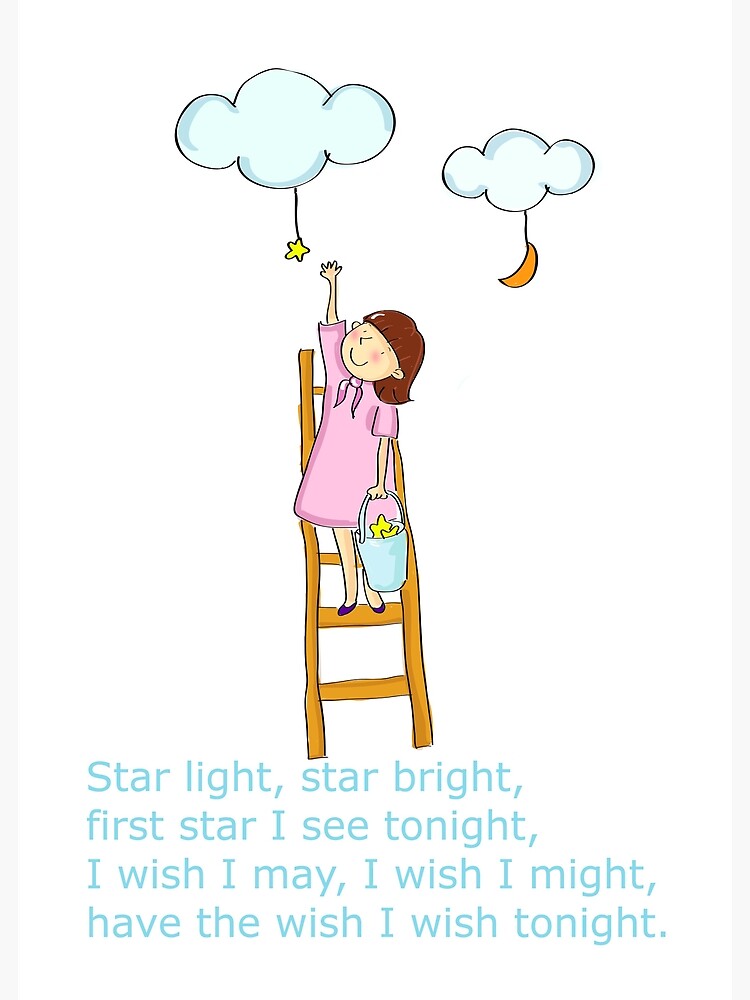
"Star Light Star Bright Poem" Framed Art Print for Sale by Whimsydesigns Redbubble
" Bright star, would I were stedfast as thou art " is a love sonnet by John Keats . Background [ edit] It is unclear when Keats first drafted "Bright Star"; his biographers suggest different dates. Andrew Motion suggests it was begun in October 1819. [1]

Pocket Chart Poem Star Light Star Bright Nursery Rhyme Made By Teachers
Would I Were Steadfast as Thou Art. British Romanticism: John Keats was one of the central English figures in the literary and artistic movement known as romanticism. Romanticism arose in England at the turn of the 19th century with the emergence of William Wordsworth and Samuel Taylor Coleridge in 1798, just a few years after Keats's birth.

Bright Star by john keats one of my favourite love poems lovepoems Love Poems, Love Quotes
'Bright star, would I were stedfast as thou art' is one of John Keats' best-loved poems. It uses a star as an image of steadfastness to depict the enduring nature of a lover's heart. Read Poem Poetry+ Guide Share Cite John Keats Nationality: English John Keats was an English poet and one of the most important of the Romantics.

A Falling Star Picture Poems Poems about stars, Poems, Meaningful poems
Bright Star, Would I Were Stedfast as Thou Art by John Keats is a sonnet that encapsulates the Romantic era's preoccupation with nature, beauty, and the transcendence of human experience. The speaker's address to the bright star reflects a desire for constancy and eternal love, juxtaposed against the changing and transient nature of human existence.

"You're the Brightest Star!" Poem by Fonda Little
Bright Star by John Keats Bright star, would I were stedfast as thou art— Not in lone splendour hung aloft the night And watching, with eternal lids apart, Like nature's patient, sleepless Eremite, The moving waters at their priestlike task Of pure ablution round earth's human shores, Or gazing on the new soft-fallen mask
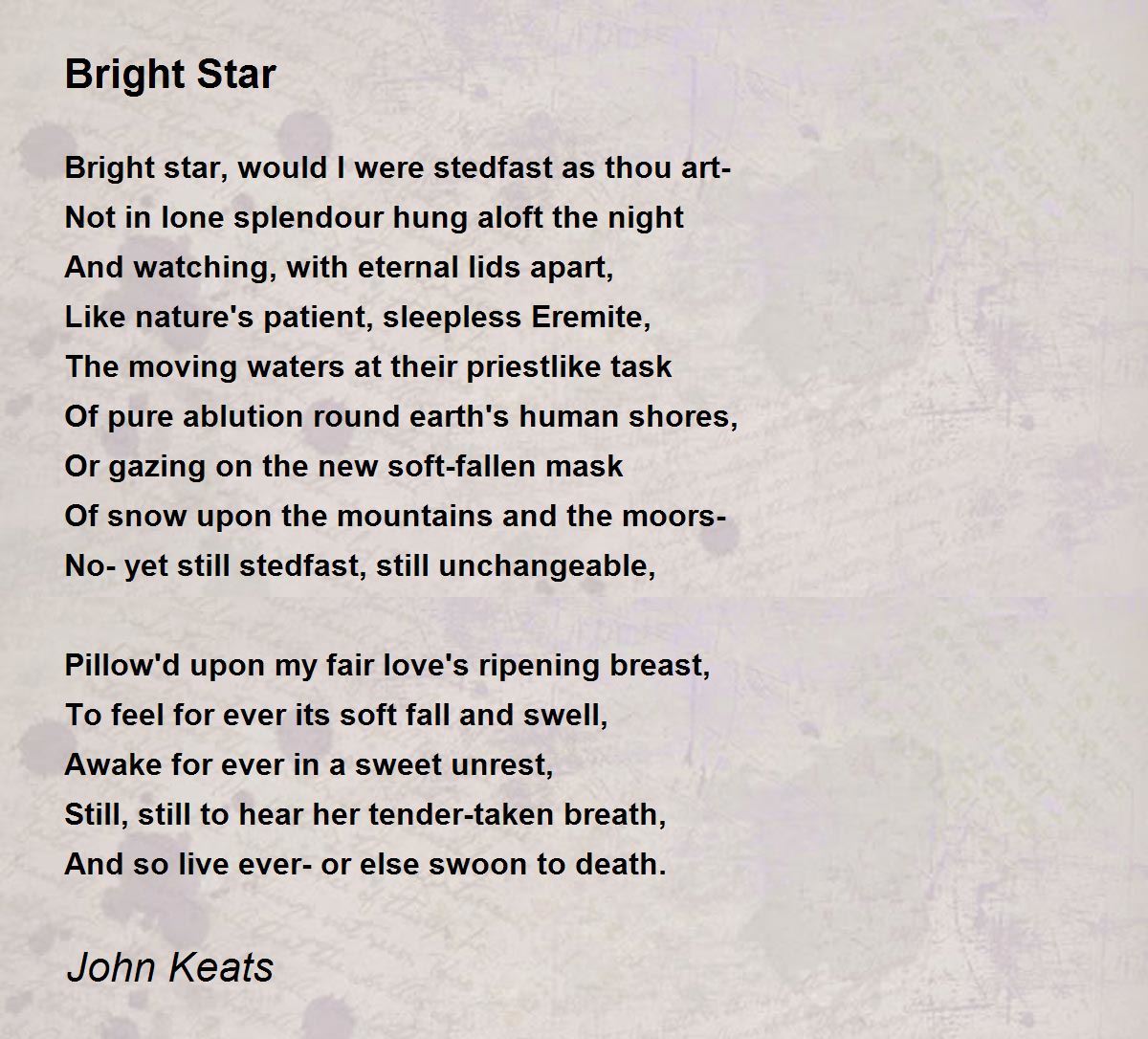
Bright Star Poem by John Keats Poem Hunter
Major Themes in "Bright Star, Would I Were Steadfast as Thou Art": Love, isolation and natural beauty are the major themes of this poem. The speaker observes certain qualities of the bright star and wants to adopt them. He discusses two things in the poem - the steadfastness of the star and its isolation.